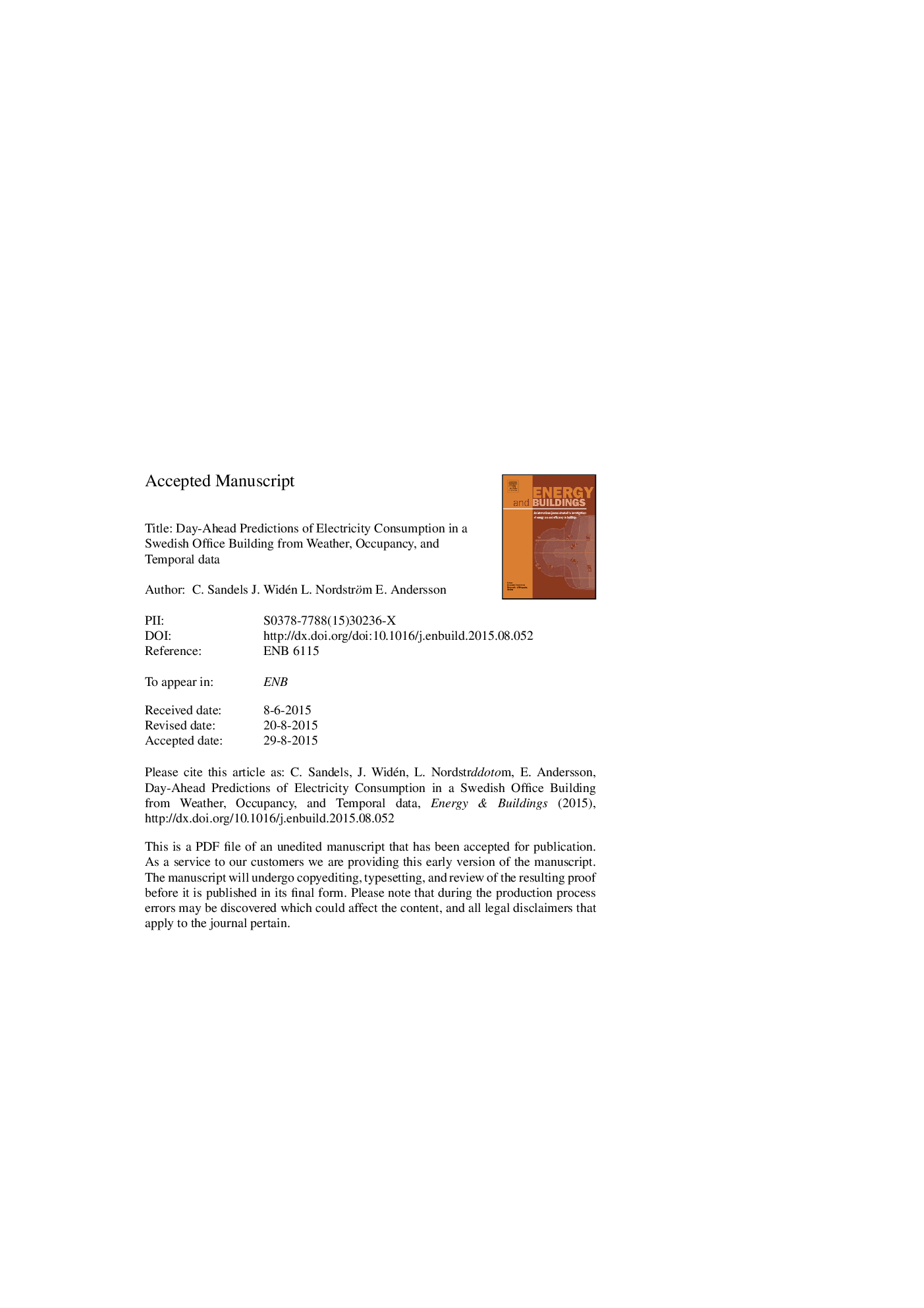| Article ID | Journal | Published Year | Pages | File Type |
|---|---|---|---|---|
| 6731111 | Energy and Buildings | 2015 | 19 Pages |
Abstract
An important aspect of demand response (DR) is to make accurate predictions for the consumption in the short term, in order to have a benchmark load profile which can be compared with the load profile influenced by DR signals. In this paper, a data analysis approach to predict electricity consumption on load level in office buildings on a day-ahead basis is presented. The methodology is: (i) exploratory data analysis, (ii) produce linear models between the predictors (weather and occupancies) and the outcomes (appliance, ventilation, and cooling loads) in a step wise function, and (iii) use the models from (ii) to predict the consumption levels with day-ahead prognosis data on the predictors. The data has been collected from a Swedish office building floor. The results from (ii) show that occupancy is correlated with appliance load, and outdoor temperature and a temporal variable defining work hours are connected with ventilation and cooling load. It is concluded from the results in (iii) that the error rate decreases if fewer predictors are included in the predictions. This is because of the inherent forecast errors in the day-ahead prognosis data. The achieved error rates are comparable with similar prediction studies in related work.
Keywords
Related Topics
Physical Sciences and Engineering
Energy
Renewable Energy, Sustainability and the Environment
Authors
C. Sandels, J. Widén, L. Nordström, E. Andersson,
